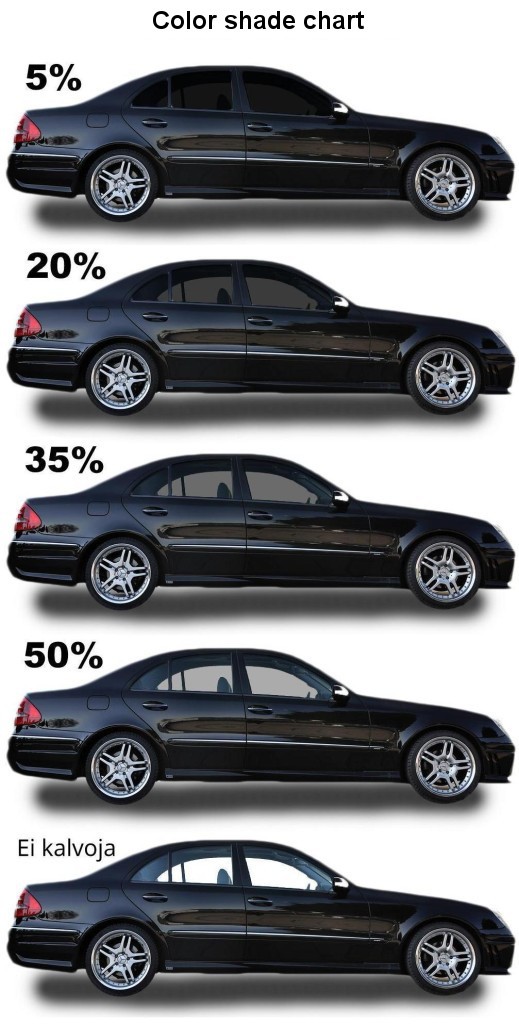Auto Window Tinting: Find the Best Deals and Quality Services Nearby
Wiki Article
Home Window Tinting Regulations and Standards: What You Required to Know Before Tinting Your Cars And Truck
Prior to continuing with window tinting for your vehicle, it is important to acquaint on your own with the diverse laws and standards that regulate this technique across different states. These policies determine the permissible degrees of tint darkness, commonly determined by noticeable light transmission (VLT) portions, and consist of details stipulations for front windscreens aimed at making sure road safety and security.Overview of Window Tinting Regulations
Home window tinting laws are frequently subject to variation throughout various territories, reflecting local regulations and safety and security considerations. These regulations dictate the allowable degrees of tint darkness and reflectiveness on vehicle windows, guaranteeing that vehicle drivers preserve sufficient presence while also safeguarding versus damaging UV rays and heat.A lot of policies classify window tinting based on the Visible Light Transmission (VLT) portion, which suggests the amount of light that can go through the window. Normally, lower VLT percentages indicate darker tints. Laws usually differentiate between the front, side, and back windows, with more stringent constraints related to the front windscreen to enhance safety and security for both the driver and other road customers.
Furthermore, some jurisdictions enforce constraints on the reflectivity of the tint, avoiding extreme glare that might hinder visibility. Exemptions to these legislations might exist for individuals with details medical conditions calling for additional sun protection. Compliance with window tinting regulations is vital, as violations can cause penalties, compulsory removal of the tint, and potential rises in insurance policy premiums. For that reason, it is important for automobile proprietors to familiarize themselves with local regulations before continuing with home window tinting setups.
State-by-State Tint Laws
Recognizing the particular window tinting regulations in each state is essential for vehicle proprietors seeking to adhere to the law. Each state in the U.S. has established its very own collection of regulations regulating home window tinting, which can differ significantly. These guidelines typically determine the allowable degrees of color darkness, the kinds of home windows that can be tinted, and any kind of medical exceptions that may apply.For circumstances, states like The golden state have rigorous constraints on color darkness for front home windows, while others, such as New Mexico, might allow darker tints. In addition, particular states mandate certain presence percentages for numerous home windows, including the windshield, front side home windows, and rear home windows. It is important for cars and truck owners to acquaint themselves with their state's laws to stay clear of prospective fines or charges.
Moreover, some states might need an accreditation sticker label to be positioned on colored home windows, showing conformity with state regulations. Failure to abide by these laws not only risks legal effects however can also impact safety and security and exposure while driving. Vehicle owners must conduct detailed study or speak with regional authorities to make sure complete understanding and compliance with state-by-state color laws.
Allowed Color Kinds and levels
Numerous car proprietors might be shocked to learn that enabled tint levels and kinds vary commonly throughout various states. Each state has established its very own laws concerning the acceptable darkness and reflectivity of window tint, frequently gauged by Visible Light Transmission (VLT) percents. VLT describes the look these up amount of light that can pass via the colored windows; therefore, a reduced portion indicates a darker color.
Moreover, the kinds of tint products allowed can vary, with some states banning metallic or mirror-like finishes. It is crucial for automobile owners to familiarize themselves with their state's particular regulations to make sure conformity. visit the site Non-compliance can cause fines, required elimination of the tint, or various other legal effects, making it essential to comprehend these policies before proceeding with setup.
Medical Exemptions for Tinting
While not all states give allocations for clinical exceptions pertaining to home window tinting, those that do identify the necessity for certain people to boost exposure and convenience due to clinical problems. Various clinical conditions, such as lupus, skin cancer, and specific eye problems, can render individuals specifically delicate to sunshine. As a result, these individuals may call for darker colors to secure themselves from damaging UV rays and glare.
It is essential to keep in mind that despite having a medical exemption, there may still be limitations on the level of color enabled. Conformity with state legislations makes sure that individuals are both safeguarded and within lawful limits. Those thinking about clinical exceptions should call their local Division of Motor Vehicles or equivalent authority to comprehend the procedures and requirements required to request an exemption properly.
Fines for Non-Compliance
Falling short to follow window tinting regulations can result in substantial penalties, which differ by state. Legislation enforcement firms are empowered to issue citations for vehicles that do not follow the defined tinting laws. These fines normally include penalties, which can vary from moderate total up to numerous hundred bucks, depending upon the seriousness of the infraction and the state in inquiry.In some territories, repeated offenses might result in rising penalties or added charges, such as required court looks. Additionally, non-compliance may necessitate the removal of unlawful tinting, commonly at the owner's expenditure. In severe situations, habitual transgressors may deal with suspension of their vehicle enrollment till compliance is attained.
In addition, insurance policy implications may occur over at this website from obtaining multiple citations for window color violations. Insurance providers might see such violations as an indication of riskier actions, potentially causing increased premiums or problem in protection.
To stay clear of these penalties, it is crucial for lorry owners to acquaint themselves with their regional window tinting legislations and make certain that their car complies (Window Tinting). This aggressive approach not only prevents lawful ramifications but likewise advertises roadway safety and security
Final Thought

Many laws categorize home window tinting based on the Visible Light Transmission (VLT) percentage, which suggests the amount of light that can pass via the home window. Compliance with window tinting policies is essential, as infractions can result in fines, obligatory removal of the color, and potential rises in insurance costs.Understanding the specific home window tinting guidelines in each state is vital for vehicle owners seeking to conform with the law. These guidelines usually determine the permitted degrees of color darkness, the kinds of home windows that can be tinted, and any clinical exemptions that may use.
For instance, states like California have rigorous restrictions on tint darkness for front windows, while others, such as New Mexico, may allow darker tints.
Report this wiki page